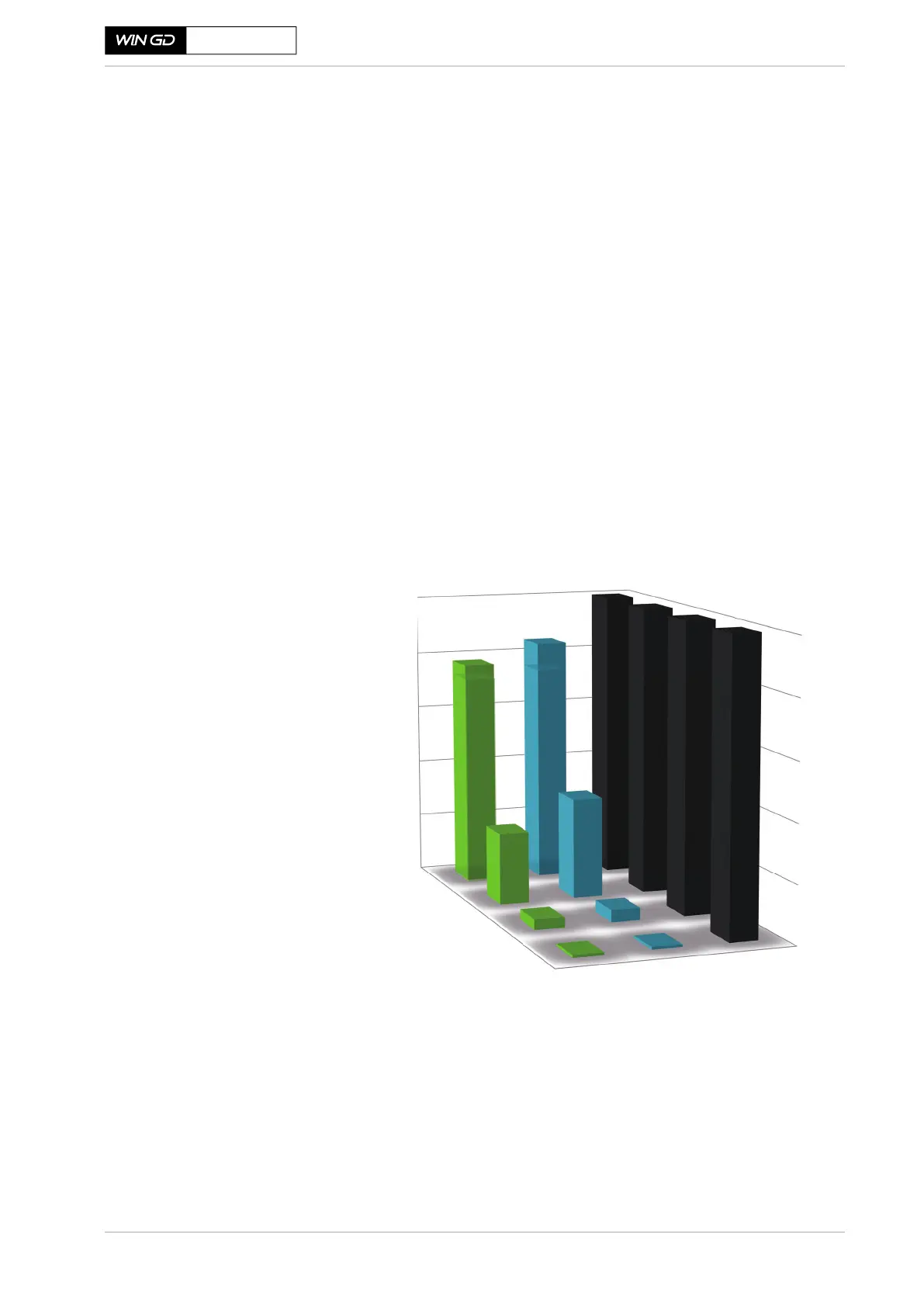Marine Installation Manual 2022-03 7-1
7 Engine Emissions
7.1 Exhaust gas emissions
X62DF-S2.0
7 Engine Emissions
In 1973, an agreement on the International Convention for the Prevention of
Pollution from Ships (ICPPS) was reached. It was modified in 1978 and is now
known as MARPOL 73/78.
MARPOL 73/78 Annex VI (also known as MARPOL Annex VI), came into ef-
fect in 2005 and contains regulations limiting or prohibiting certain types of
emissions from ships, including limitations with respect to air pollution.
MARPOL Annex VI is continuously amended. Recently a revised and updated
version has been published as IMO resolution MEPC.328(76) and will come into
effect in November 2022.
7.1 Exhaust gas emissions
Major exhaust gas emissions include oxides of carbon (CO and CO
2
), oxides of
nitrogen (NO and NO
2
), oxides of sulphur (SO
2
and SO
3
) and Particulate Matter
(PM). Exhaust gas emissions are a critical topic of interest in the shipping in-
dustry.
Figure 7-1 Emissions comparison between X-DF2.0, X-DF and diesel engines
As shown in Figure 7-1, X-DF engine emissions are significantly reduced compared
to diesel engines. These reductions are mainly related to the engine technologies
and different fuels. X-DF engines operate according to the Otto cycle combustion
process, which contributes to the NO
x
reduction. In addition, X-DF engines use
LNG as the main fuel and this leads to a reduction of CO
2
, CO
2 eq.
(CO
2
-equiva-
lent), PM and SO
x
. A further reduction in emissions is observed between X-DF and
X-DF2.0 engines, related to the introduction of iCER technology.
SM-0833
CO &
COequivalent
PM
NO
x
SO
x
X-DF2.0
X-DF
100
80
60
40
20
0
Emission values [%]
Diesel engine
(VLSFO)
